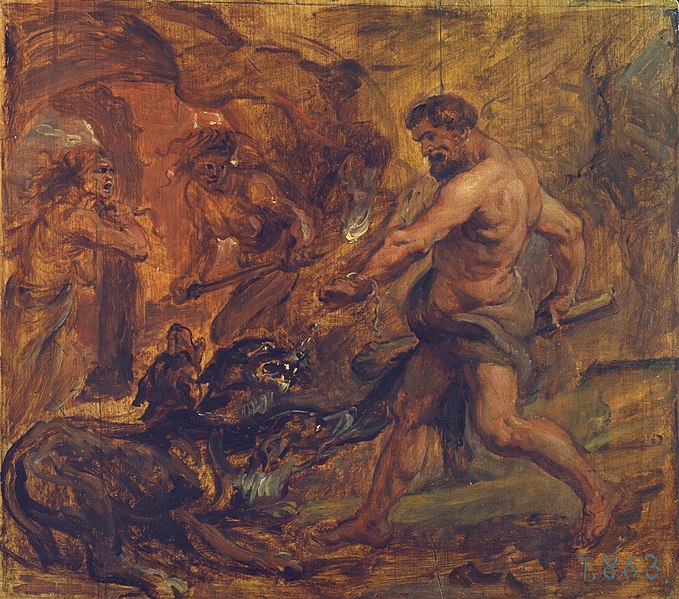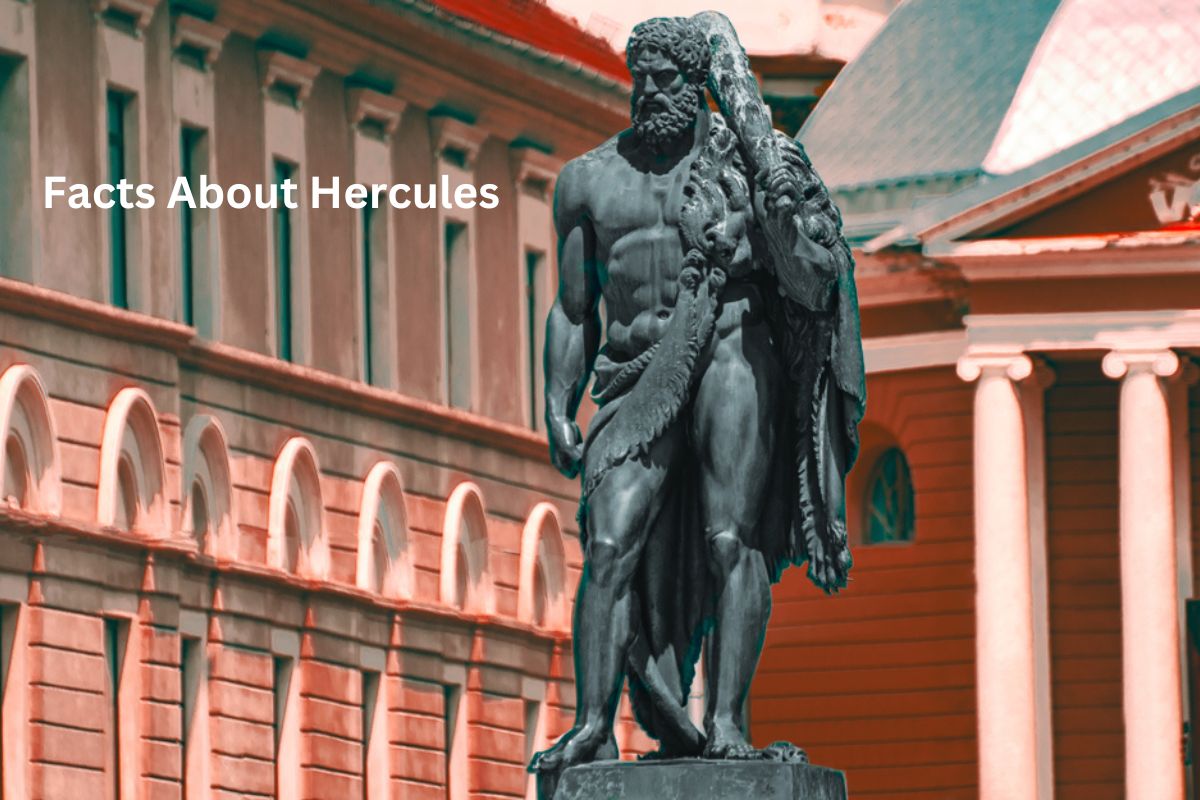Hercules, also known as Heracles in Greek mythology, is a legendary hero and demigod. He was the son of Zeus, the king of the gods, and Alcmene, a mortal woman.
Hercules possessed incredible strength and was known for his extraordinary feats, most notably the completion of the Twelve Labors.
He symbolizes strength, bravery, and the triumph of good over evil.
Throughout history, Hercules has inspired numerous works of art, literature, and films, and remains an iconic figure in popular culture.
Hercules Facts
1. Hercules was a legendary hero and demigod in Greek mythology
Hercules, also known as Heracles, was a prominent figure in Greek mythology. He was revered as a hero due to his exceptional strength, courage, and various accomplishments.
Also Read: Facts About Medusa
As a demigod, he was part mortal and part divine, being the son of Zeus, the king of the gods, and Alcmene, a mortal woman.
2. He was the son of Zeus and a mortal woman named Alcmene
According to mythology, Zeus took the form of Alcmene’s husband, Amphitryon, and impregnated her, resulting in the birth of Hercules.
Also Read: Gaia Facts
Zeus’ wife, Hera, who often harbored resentment towards Zeus’ extramarital affairs and their offspring, was particularly hostile towards Hercules throughout his life.

3. Hercules possessed incredible strength and was known for his extraordinary feats
From a young age, Hercules displayed incredible physical strength and power. His exceptional might was considered unmatched among mortals. He possessed the strength to strangle serpents as an infant and continued to demonstrate superhuman abilities throughout his life.
4. His most famous accomplishment was completing the Twelve Labors
Hercules became famous for his extraordinary feats, with the most renowned being the Twelve Labors, a series of tasks imposed upon him as punishment for the murder of his wife and children.
These 12 labors of Hercules showcased his immense strength, cunning, and endurance as he faced and triumphed over formidable adversaries and challenges.
5. He wore a lion’s skin and carried a club as his symbols
In depictions and representations of Hercules, he is often portrayed wearing the skin of the Nemean Lion, one of the creatures he defeated during his Twelve Labors. The lion’s skin became his signature garment, symbolizing his bravery and victory over the powerful beast.
Additionally, Hercules is commonly depicted carrying a large club, which he used as a weapon during his heroic exploits.

6. Hercules was susceptible to pain, injury, and fatigue despite his superhuman abilities
Although Hercules possessed immense strength and was considered a demigod, he was not invulnerable. Despite his divine heritage, he was subject to physical limitations and vulnerabilities.
He could experience pain, suffer injuries, and tire from his exertions, making him relatable to mortals. This aspect of Hercules’ character highlighted his humanity and added depth to his mythological portrayal.
7. He was depicted as a muscular man in many artistic representations
In various works of art, sculptures, and illustrations, Hercules is depicted as a physically imposing figure with a muscular physique. This depiction emphasizes his exceptional strength and athleticism.
Artists sought to capture his imposing presence and convey his status as a legendary hero. The portrayal of Hercules as a muscular man has had a lasting impact on the popular image and perception of the character.
8. Hercules was a cultural hero and symbol of strength and bravery
In Greek mythology, Hercules was revered as a cultural hero and served as a symbol of strength, bravery, and the triumph of good over evil.
His legendary feats and ability to overcome seemingly insurmountable challenges made him an inspiration for ancient Greeks. He represented the ideals of heroism, courage, and the pursuit of greatness.
9. His stories have inspired numerous works of art, literature, and films
The mythological tales of Hercules have captivated artists, writers, and filmmakers throughout history. His epic adventures, struggles, and triumphs have been retold and reimagined in various forms of art, literature, and entertainment.
From ancient Greek sculptures to Renaissance paintings, and from classical plays to modern-day movies, Hercules’ stories have left a lasting impact on culture and continue to be a source of inspiration.
10. Hercules had many romantic relationships and marriages and was eventually welcomed into Mount Olympus after his death
As a legendary figure, Hercules was often depicted as having numerous romantic relationships and marriages. His most famous wife was Megara, with whom he had children.
However, in a fit of madness induced by Hera, he mistakenly killed Megara and their children. Hercules’ love life was complex and featured other relationships and marriages, including with Deianira, Iole, and Hebe.
Following his death, Hercules was granted immortality and welcomed as a god on Mount Olympus. He was accepted among the other gods, becoming a divine figure. He was married to Hebe, the goddess of youth, and enjoyed eternal life and bliss in the realm of the gods. This elevation to godhood solidified his status as a revered and celebrated figure in Greek mythology.
